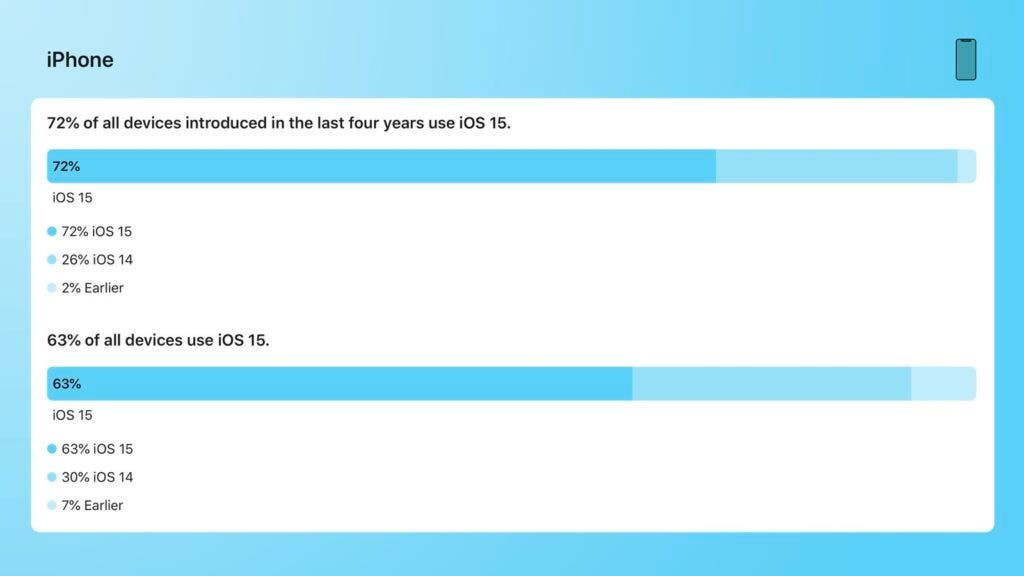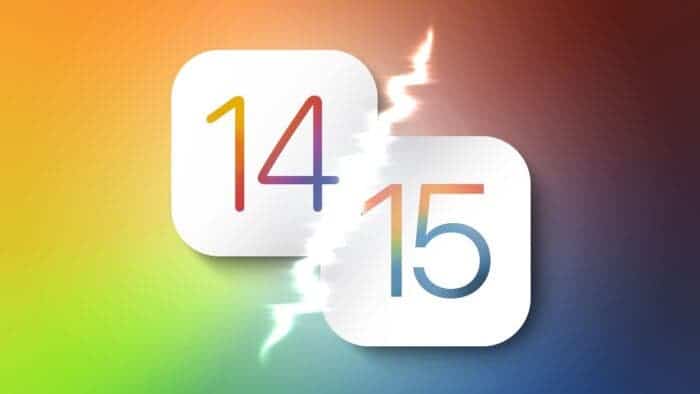Since the official announcement of iOS 15, millions of iPhone users have upgraded to this new system. Apple announced the data on the number of installations of iOS 15 for the first time. The results show that among the iPhone models launched in the last four years, the current share of iOS 15 is 72%. Furthermore, the share of iOS 14 is 26% and the remaining 2% is for an older system. If you include models released four years ago, iOS 15 has a 63% share of all-device installations. In addition, the iOS 14 currently has 30% while the remaining 7% are sticking with older versions.

The proportion of iPadOS 15 is even lower, with a device share of 57%. For devices within the last four years, it has a share of only 49%. In terms of actual performance on the device, iOS 15 comes with more upgrades than its predecessor. However, in terms of installation performance, the iOS 15 actually performs worse than iOS 13 and iOS 14.
In December 2020, the four-year device install ratio of iOS 14 was as high as 81%. Furthermore, in January 2020, the iOS 13 was also 77%. However, perhaps unhappy with the performance of iOS 15, Apple seems to have taken steps. In the early stage of the official version of iOS 15, it is only an optional update, in other words, users can still choose between iOS 14/15. However, Apple has stopped iOS 14 security updates. Thus, if users want to get bug fixes and a better system, they must upgrade to iOS 15.
The latest official version of iOS 15 is 15.2.1, the beta version is iOS 15.3 Beta 2, and the latest official version of iOS 14 is iOS 14.8.1. However, for those who are still on iOS 14.8, checking for updates no longer has the option to keep iOS 14. They will have to compulsorily upgrade to iOS 15.2.1.
iOS 15 bug forces iPhones to restart in a loop
A few days ago, a researcher by the name of Trevor Spiniolas discovered a serious bug in Apple’s Home app, the application dedicated to home automation from Apple. According to the researcher, this malfunction appears when a HomeKit device whose name exceeds 500,000 characters is added to a user’s home through the Home app.
Adding this device will cause a complete crash or loop restart of an iPhone in iOS 15. If the Home devices option is enabled on your iPhone, you might find it stuck in an endless reboot loop. To protect himself while Apple fixes the flaw, Trevor Spiniolas recommends disabling House Controls, the section of the Control Center that allows access to “suggested controls for House scenes and automation” without having to open the app.





